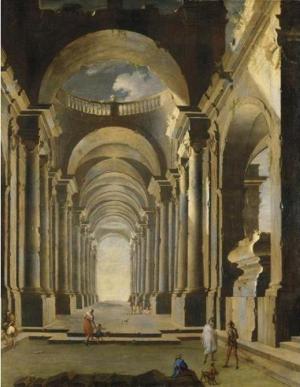People of Destiny: Americans as I saw Them at Home and Abroad
Nonfiction, Religion & Spirituality, New Age, History, Fiction & Literature| Author: | Philip Gibbs | ISBN: | 9781465528636 |
| Publisher: | Library of Alexandria | Publication: | March 8, 2015 |
| Imprint: | Language: | English |
| Author: | Philip Gibbs |
| ISBN: | 9781465528636 |
| Publisher: | Library of Alexandria |
| Publication: | March 8, 2015 |
| Imprint: | |
| Language: | English |
I had The luck to go to New York for The first time when The ordinary life of that City of Adventure—always so vital and dynamic in activity—was intensified by The emotion of historic days. The war was over, and The warriors were coming home with The triumph of victory as The reward of courage; but peace was still delayed and There had not yet crept over The spirits of The people The staleness and disillusionment that always follow The ending of war, when men say: "What was The use of it, after all? Where are gratitude and justice? Who pays me for The loss of my leg?"... The emotion of New York life was visible in its streets. The city itself, monstrous, yet dreamlike and mystical as one sees it first rising to fantastic shapes through The haze of dawn above The waters of The Hudson, seemed to be excited by its own historical significance. There was a vibration about it as sunlight splashed its gold upon The topmost stories of The skyscrapers and sparkled in The thousand windows of The Woolworth Tower and flung black bars of shadow across The lower blocks. Banners were flying everywhere in The streets that go straight and long between those perpendicular cliffs of masonry, and The wind that comes blowing up The two rivers ruffled Them. They were banners of rejoicing, but reminders also of The service and sacrifice of each house from which They were hanging, with golden stars of death above The heads of The living crowds surging There below Them. in those decorations of New York I saw The imagination of a people conscious of Their own power, and with a dramatic instinct able to impress The multitudes with The glory and splendor of Their achievement. It was The same sense of drama that is revealed commercially in The genius of advertisement which startled me when I first walked down Broadway, dazzled by moving pictures of light, by flashing signs that shouted to me from high heaven to buy chewing-gum and to go on chewing; and squirming, wriggling, revolving snakes of changing color that burned letters of fire into my brain, so that even now in remembrance my eyes are scorched with The imprint of a monstrous kitten unrolling an endless reel of cotton. The "Welcome Home" of American troops was an advertisement of American manhood, idealized by emotion; and it was designed, surely, by an artist whose imagination had been touched by The audacity of The master-builders of New York who climb to The sky with Their houses. I think it was inspired also by The vision of The moving-picture kings who resurrect The gorgeous life of Babylon, and re-establish The court of Cleopatra, for Theda Bara, The "Movie Queen." When The men of The Twenty-seventh Division of New York came marching home down Fifth Avenue They passed through triumphal arches of white plaster that seemed solid enough to last for centuries, though They had grown high, like Jack's beanstalk, in a single night; and The troops glanced sideways at a vast display of Indian trophies with tattered colors like those of sunburnt wigwams where The spears of The "braves" were piled above The shields of fallen warriors.
I had The luck to go to New York for The first time when The ordinary life of that City of Adventure—always so vital and dynamic in activity—was intensified by The emotion of historic days. The war was over, and The warriors were coming home with The triumph of victory as The reward of courage; but peace was still delayed and There had not yet crept over The spirits of The people The staleness and disillusionment that always follow The ending of war, when men say: "What was The use of it, after all? Where are gratitude and justice? Who pays me for The loss of my leg?"... The emotion of New York life was visible in its streets. The city itself, monstrous, yet dreamlike and mystical as one sees it first rising to fantastic shapes through The haze of dawn above The waters of The Hudson, seemed to be excited by its own historical significance. There was a vibration about it as sunlight splashed its gold upon The topmost stories of The skyscrapers and sparkled in The thousand windows of The Woolworth Tower and flung black bars of shadow across The lower blocks. Banners were flying everywhere in The streets that go straight and long between those perpendicular cliffs of masonry, and The wind that comes blowing up The two rivers ruffled Them. They were banners of rejoicing, but reminders also of The service and sacrifice of each house from which They were hanging, with golden stars of death above The heads of The living crowds surging There below Them. in those decorations of New York I saw The imagination of a people conscious of Their own power, and with a dramatic instinct able to impress The multitudes with The glory and splendor of Their achievement. It was The same sense of drama that is revealed commercially in The genius of advertisement which startled me when I first walked down Broadway, dazzled by moving pictures of light, by flashing signs that shouted to me from high heaven to buy chewing-gum and to go on chewing; and squirming, wriggling, revolving snakes of changing color that burned letters of fire into my brain, so that even now in remembrance my eyes are scorched with The imprint of a monstrous kitten unrolling an endless reel of cotton. The "Welcome Home" of American troops was an advertisement of American manhood, idealized by emotion; and it was designed, surely, by an artist whose imagination had been touched by The audacity of The master-builders of New York who climb to The sky with Their houses. I think it was inspired also by The vision of The moving-picture kings who resurrect The gorgeous life of Babylon, and re-establish The court of Cleopatra, for Theda Bara, The "Movie Queen." When The men of The Twenty-seventh Division of New York came marching home down Fifth Avenue They passed through triumphal arches of white plaster that seemed solid enough to last for centuries, though They had grown high, like Jack's beanstalk, in a single night; and The troops glanced sideways at a vast display of Indian trophies with tattered colors like those of sunburnt wigwams where The spears of The "braves" were piled above The shields of fallen warriors.















![Cover of the book The Cabin [La Barraca] by Philip Gibbs](https://www.kuoky.com/images/2015/march/300x300/9781465514592-Ey2r_300x.jpg)